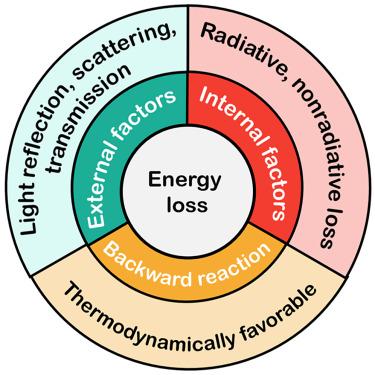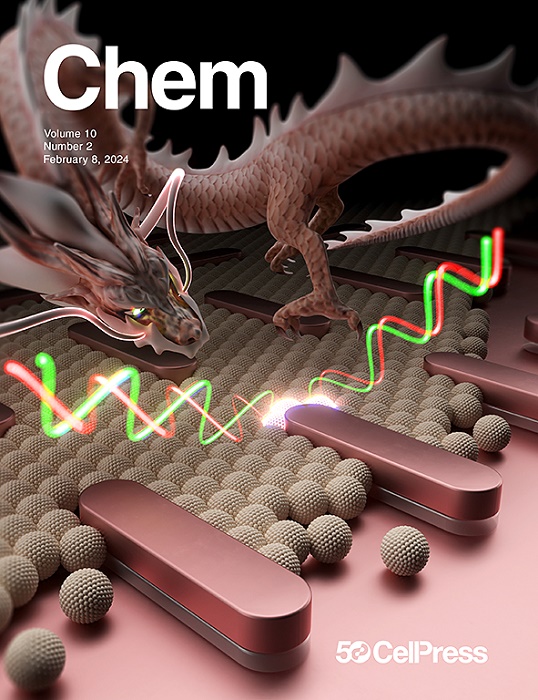异质结光催化剂的能量转换和损失
IF 19.6
1区 化学
Q1 CHEMISTRY, MULTIDISCIPLINARY
引用次数: 0
摘要
光催化因其广泛的应用前景而受到广泛关注。最近的研究强调了令人印象深刻的能量转换效率和量子产率。这一观点旨在通过分析促进对光催化过程的更好理解。传统上认为光催化过程是光能直接转化为化学能,而现在人们认为光催化过程是光经历两步转化:首先转化为电能,然后转化为化学能。造成能量损失的主要因素有三个。首先,外部因素包括光在反应器表面的吸收、反射和散射,以及溶液对光的吸收和部分光通过反应器的透射。其次,内部因素包括由振动松弛引起的能量损失和光生载流子的消失。最后,逆反应诱导产物分解。总之,考虑到这些不同的因素,实现100%的能量转换效率和量子产率是极具挑战性的,几乎是不可能的。本文章由计算机程序翻译,如有差异,请以英文原文为准。

Energy conversion and loss in heterojunction photocatalysts
Photocatalysis has gained significant attention due to its wide range of potential applications. Recent studies highlight impressive energy conversion efficiency and quantum yield. This perspective aims to facilitate a better comprehension of the photocatalytic processes through analysis. Traditionally viewed as the direct conversion of light energy to chemical energy, photocatalytic processes are now understood to involve light undergoing a two-step conversion: first to electrical energy and then to chemical energy. Three major factors contribute to energy losses. Firstly, external factors include absorption, reflection, and scattering of light on the reactor surface as well as light absorption by the solution and partial light transmission across the reactor. Secondly, internal factors encompass the energy loss derived from vibrational relaxation and the disappearance of the photogenerated charge carriers. Lastly, reverse reactions induce product decomposition. In summary, achieving 100% energy conversion efficiency and quantum yield is extremely challenging and nearly impossible considering these various factors.
求助全文
通过发布文献求助,成功后即可免费获取论文全文。
去求助
来源期刊

Chem
Environmental Science-Environmental Chemistry
CiteScore
32.40
自引率
1.30%
发文量
281
期刊介绍:
Chem, affiliated with Cell as its sister journal, serves as a platform for groundbreaking research and illustrates how fundamental inquiries in chemistry and its related fields can contribute to addressing future global challenges. It was established in 2016, and is currently edited by Robert Eagling.
 求助内容:
求助内容: 应助结果提醒方式:
应助结果提醒方式:


